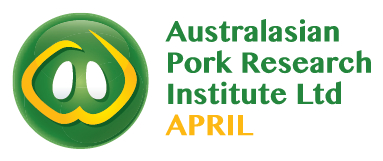APRIL received a total of 16 Industry Priority Project proposals, one Commercialisation Project proposal, and five Transformational Project proposals from its call in late 2019/early 2020. The Board is now pleased to announce that it has approved funding for the following five Industry Priority Projects that will commence in the second half of 2020 (Covid-19 permitting):
- Heat
tolerance (HT) in lactating sows: dietary strategies, metabolic biomarkers
and microbiome signature (Project Leader: Professor Eugeni Roura,
The University of Queensland).
- Aims:
- Test selected dietary supplements to increase the heat tolerance of the lactating sow.
- Identify individual variations in metabolism between heat tolerant and less heat tolerant sows during lactation (metabolic and microbiome markers in resilient compared to the most vulnerable individuals).
- Hot and
bothered! Long term impacts of late pregnancy heat stress on sows and
progeny (Project Leader: Dr Kate Plush, CHM
Alliance).
- Aims:
- Demonstrate that heat stress results in a longer duration of farrowing.
- Identify the impacts longer farrowing duration has on (a) the sow and (b) the piglet, and how this impacts impact long term performance.
- Test dietary/water additives for reducing farrowing duration during times of heat stress, and determine the production advantages at a commercial level.
- Conduct a cost:benefit analysis and assessment of farrowing room cooling in the hotter months.
- Easing
the weaning transition: large piglets from large pellets
(Project Leader: Mr Robert Hewitt, CHM Alliance).
- Aim:
- Reduce weight variability around weaning through combining two complimentary technologies, large pellets and semi-moist extruded feed, to improve feed intake in the period immediately post-weaning, sustaining weight gain.
- Use of
thermographic technology to detect reproductive state in sows and improve
piglet performance in a commercial farrowing house [Project
Leader: Dr Jessica Craig, Rivalea (Australia) Pty Ltd].
- Aims:
- Identify the optimum position on the sow for surface temperature measurements in order to predict success in lactation of sows, their health status, as well as the viability of their piglets at birth.
- Early detection of at-risk piglets, farrowing difficulties, and/or MMA to provide producers with the tools for early intervention for sows and piglets at risk.
- Food
Waste to Pig Feed – Safe and Bio-secure (Project Leader: Dr Valeria Torok,
SARDI; a joint project with the Fight Food Waste CRC).
- Aims:
- Address novel approaches to allow increased use of food wastes in pig feed.
- Identify food safety/biosecurity risks and strategies to mitigate perceived risks of utilising food waste streams into pig feed.
- Identify waste streams with the least variability in quality and quantity.
- Determine the economic feasibility of utilising food waste for pig feed in key regional production areas.
The Board also approved a Commercialisation Project submitted by Anatara Lifesciences and Ridley that will examine an in-field practical delivery mechanism (i.e., semi-moist extruded creep feed) of Anatara Lifesciences’ non-antibiotic product (bromelain) for improved post-weaning pig performance.
The successful projects demonstrated great value for money, strong industry support and application and excellent science. APRIL looks forward to these projects commencing.
Unfortunately, and as alluded to above, the APRIL-led Cooperative Research Program-Project (CRC-P) application submitted in March 2020, Pathways to rearing pigs with tails to maximise returns for pork producers, was not supported by the Australian Government. Feedback from the CRC Advisory Committee indicated that although the proposal was well articulated and presented a good potential outcome, that the partner combination was excellent and the methodology was well articulated, with good education opportunities and risk management approach, it rated less competitively than some other applications received in this round.
The application ranked in the top quartile of applications not funded; however, the overall success rate in this CRC-P round was 8%. This percentage is significantly below other competitive funding schemes that are available to APRIL, that typically range from 20-50%. This highlights not only the extremely competitive funding environment in Australia for industry-related research, but also the need for APRIL to be flexible in exploring its external funding leveraging opportunities. APRIL welcomes any feedback and suggestions for such prospects.
